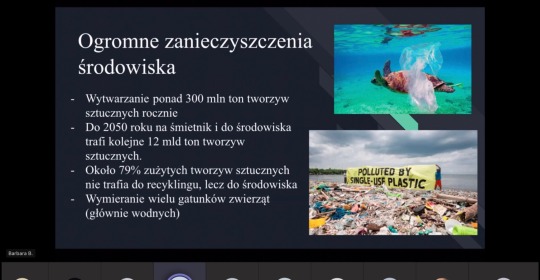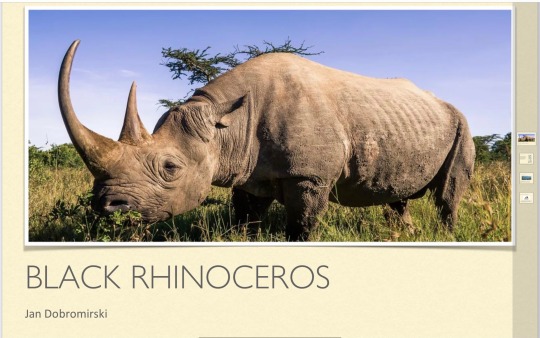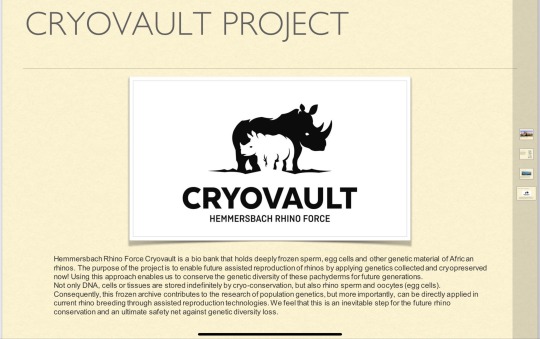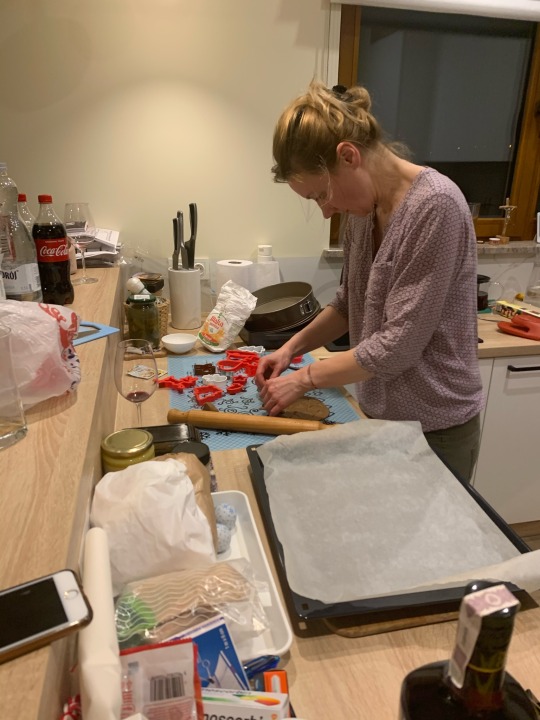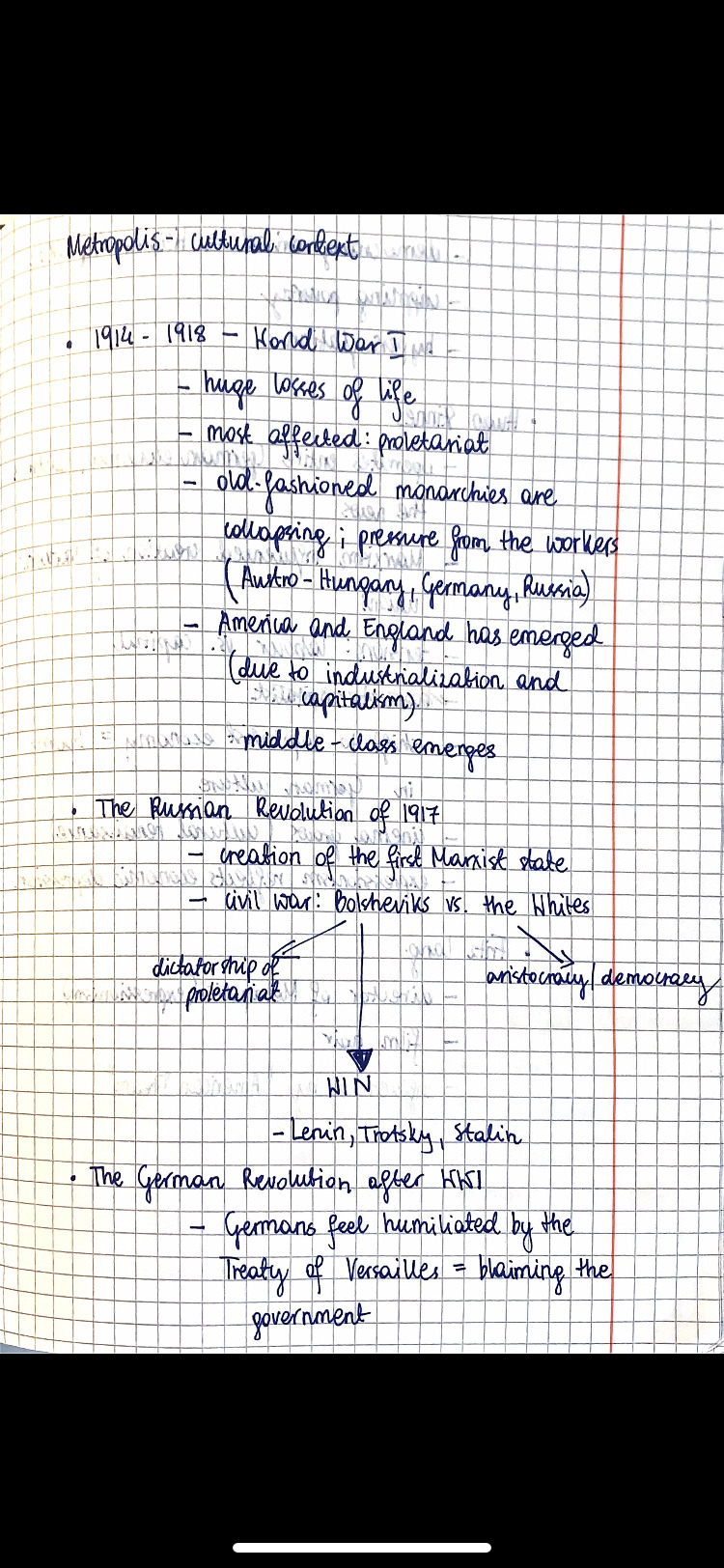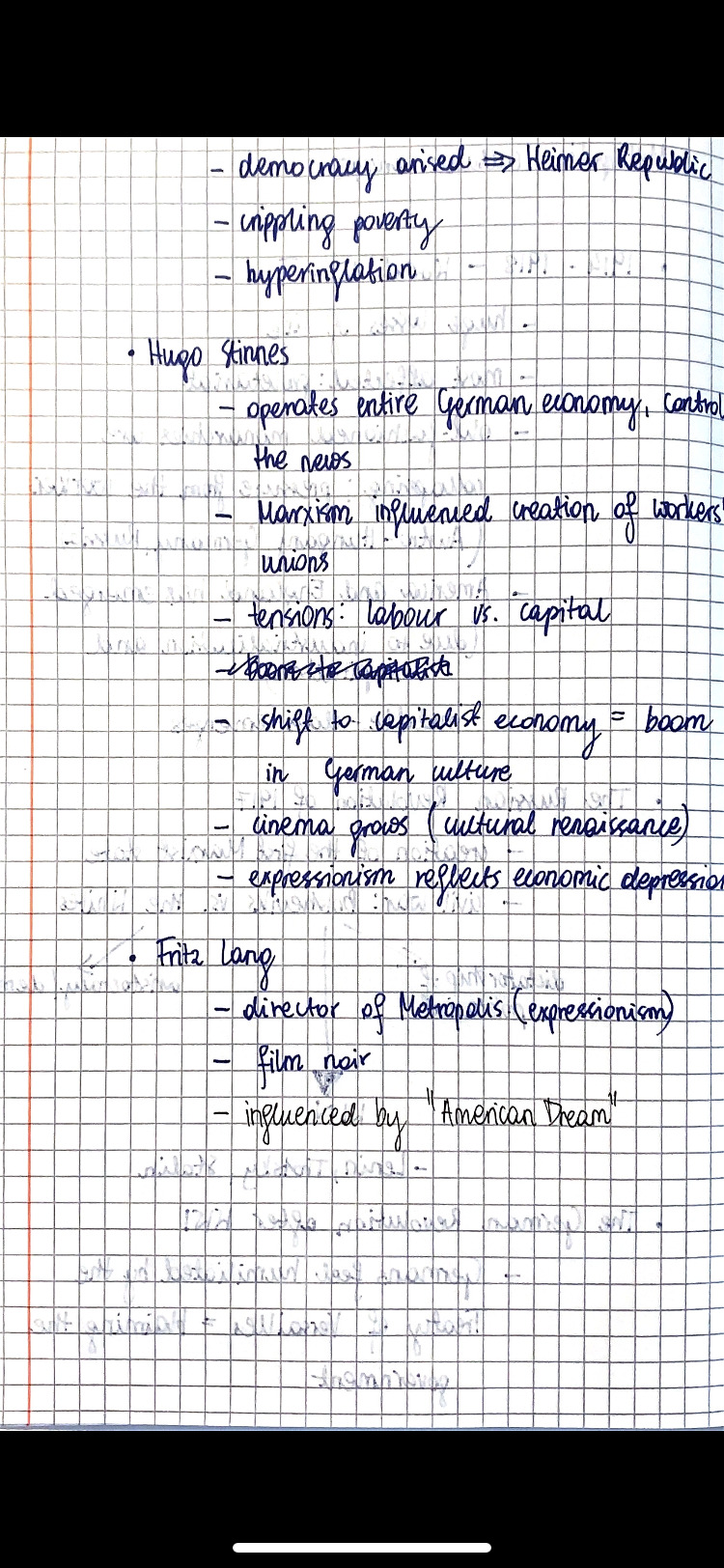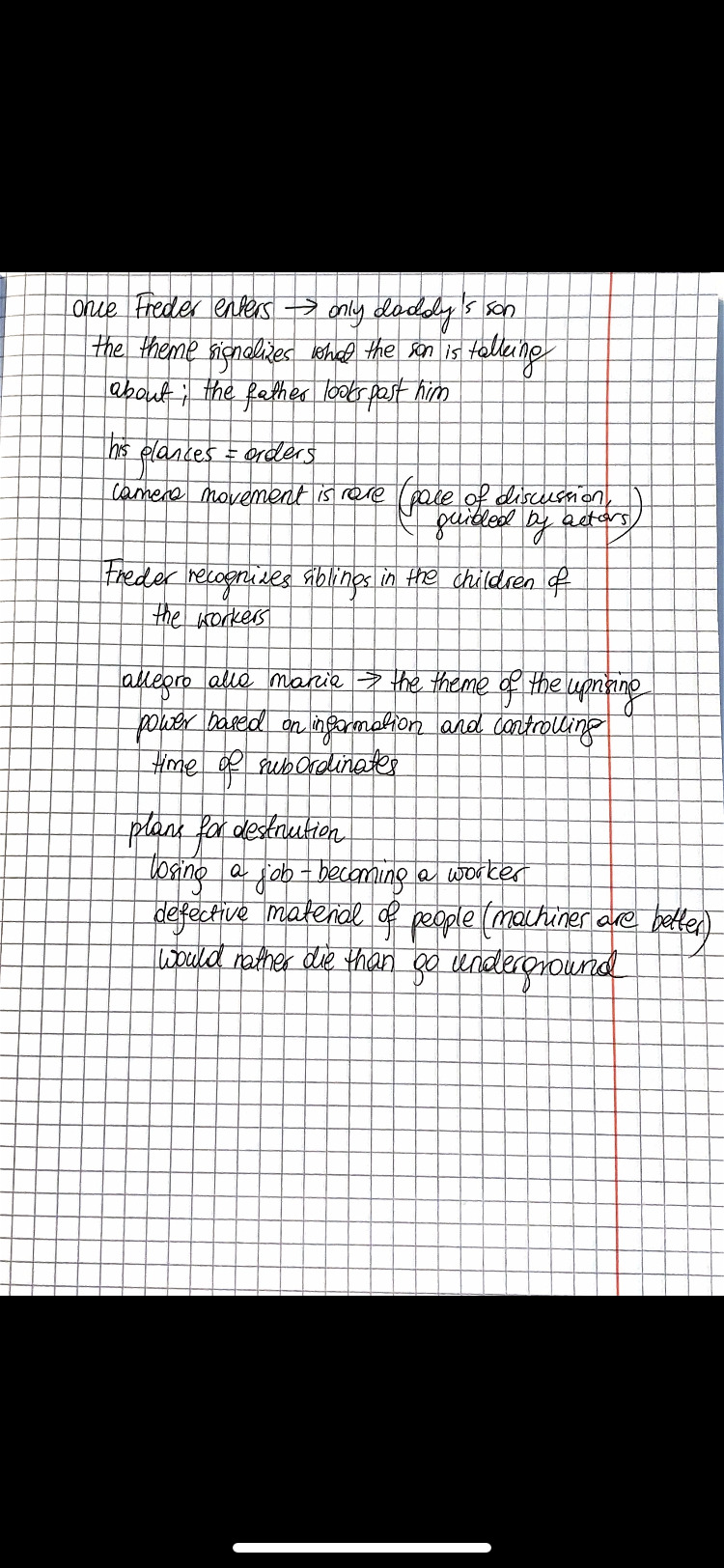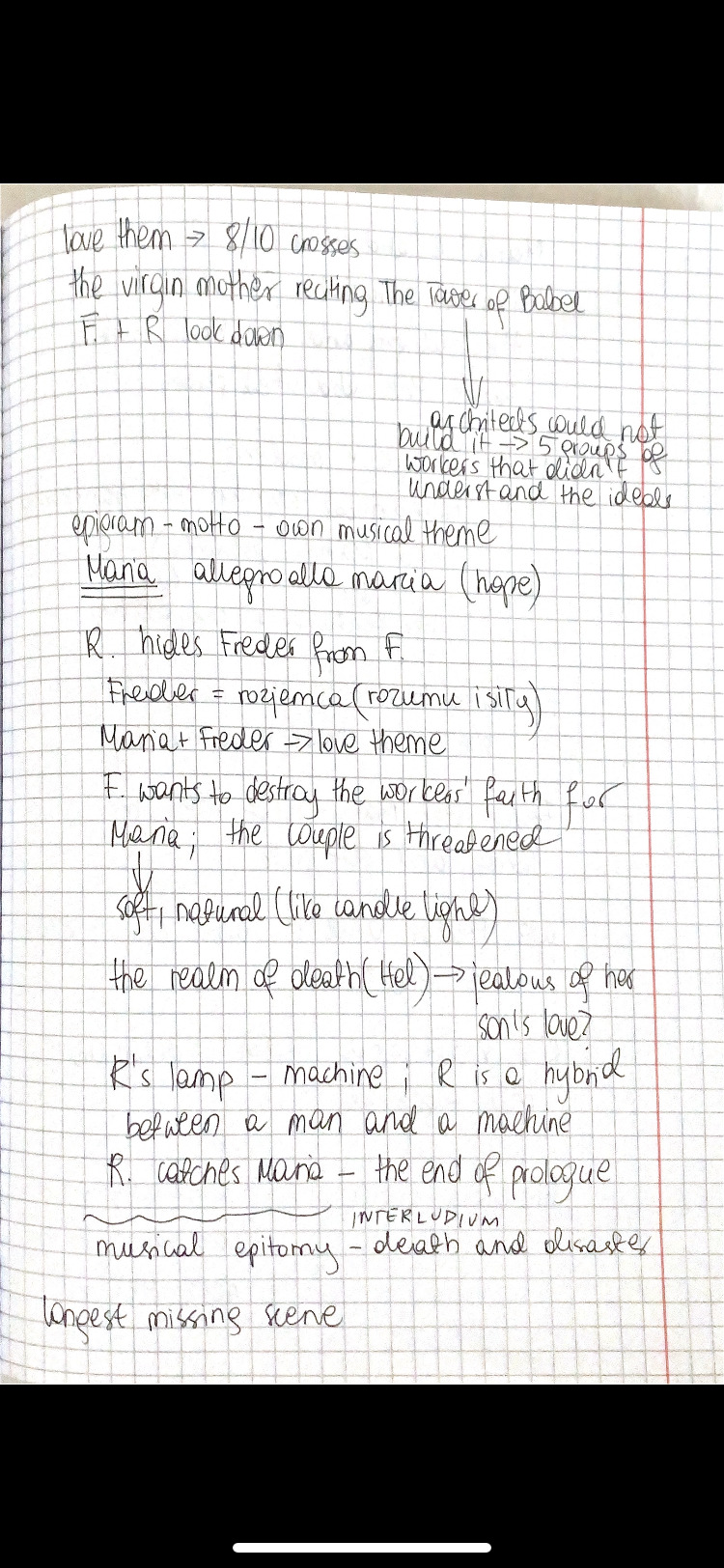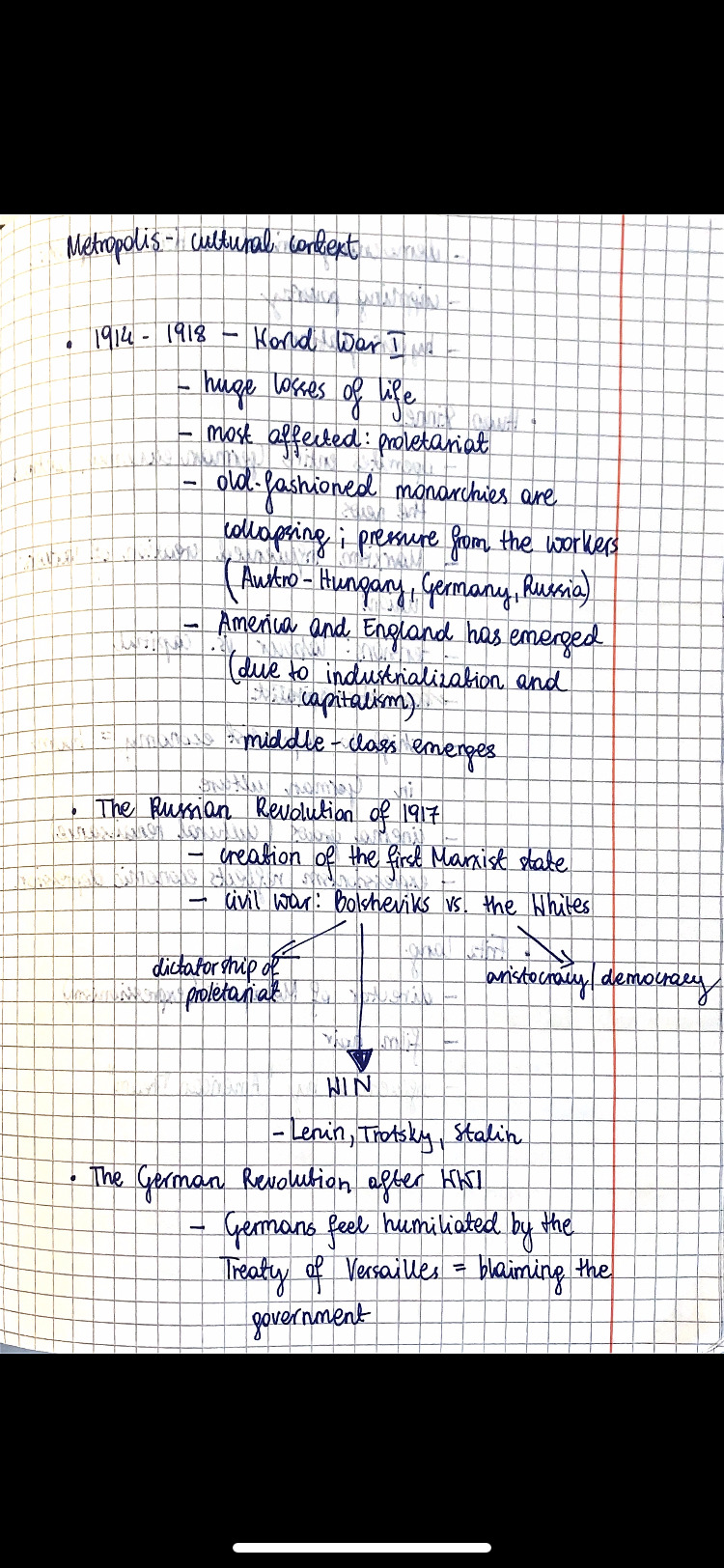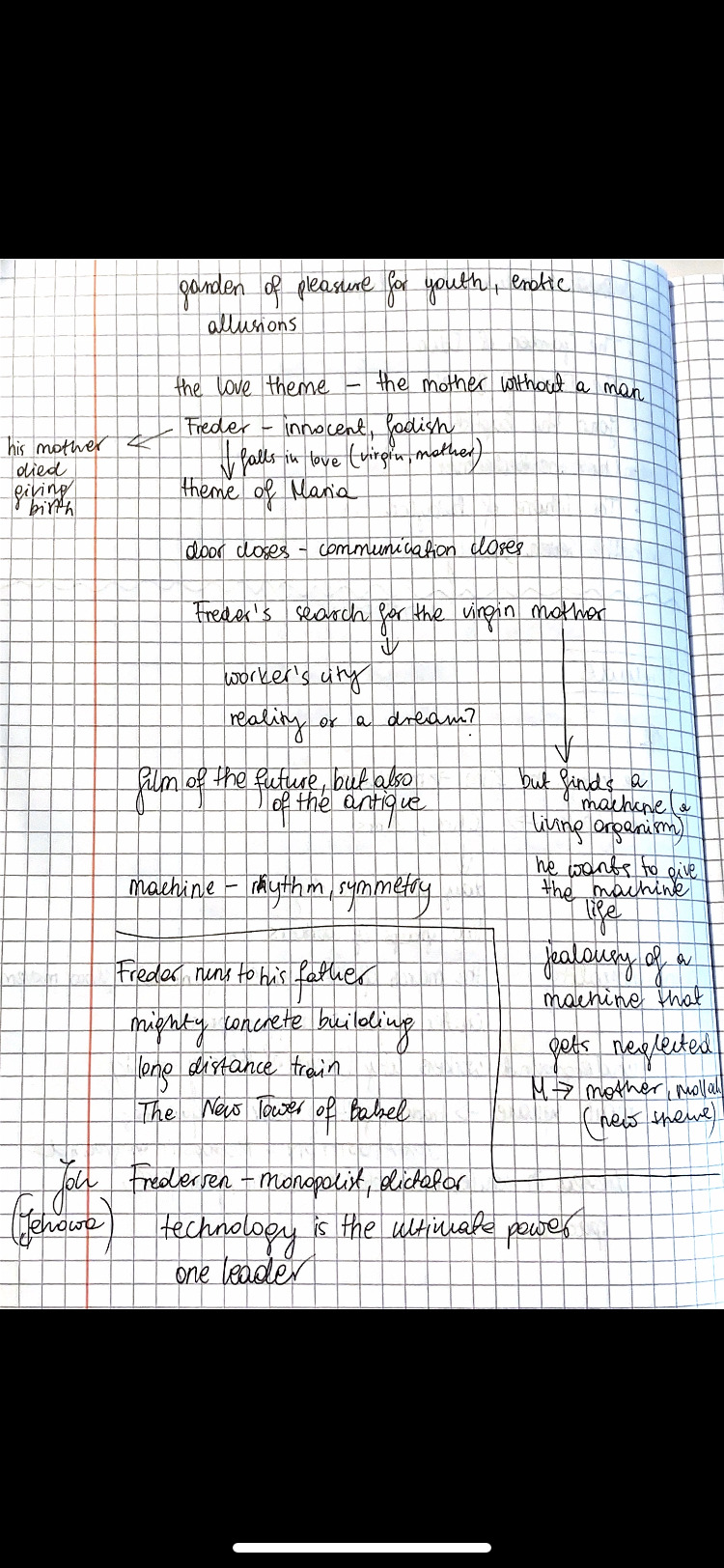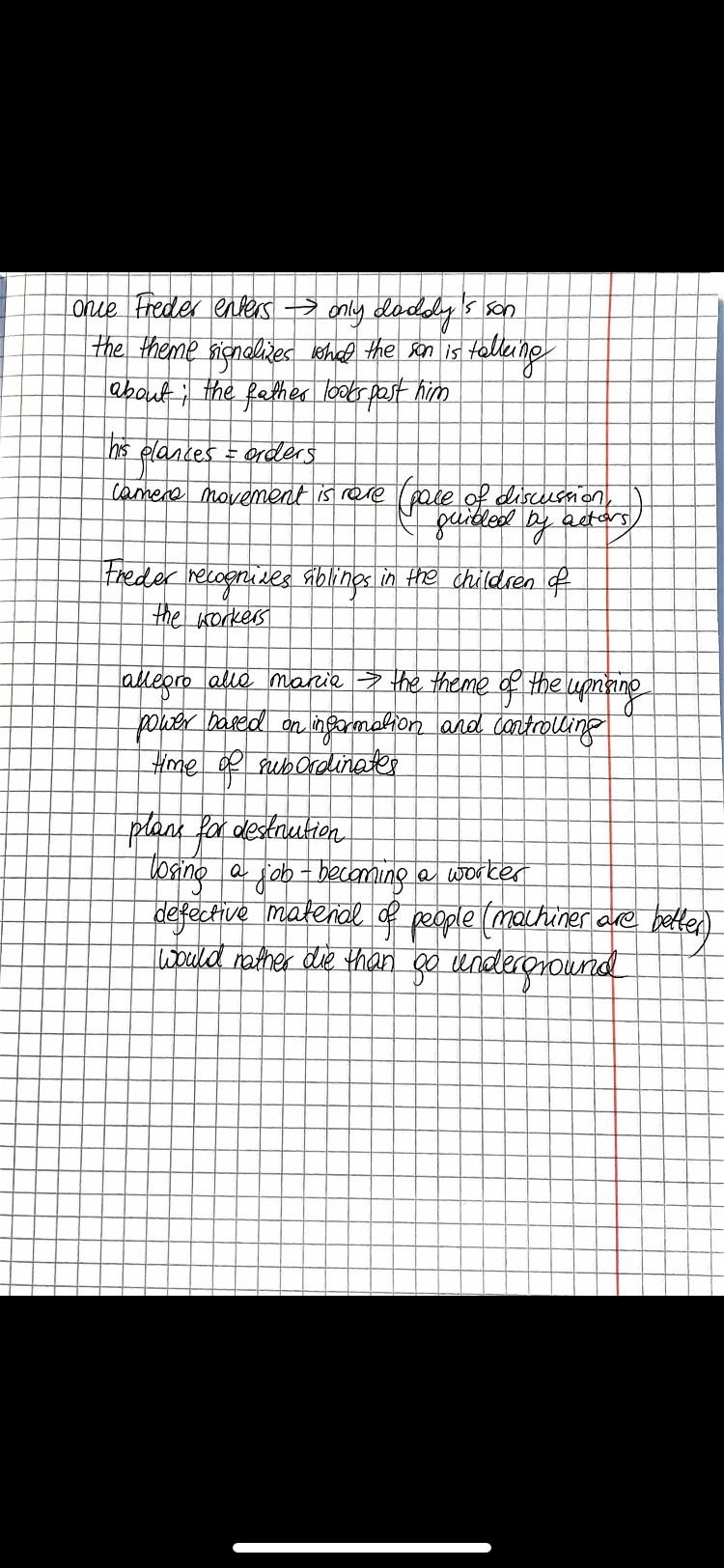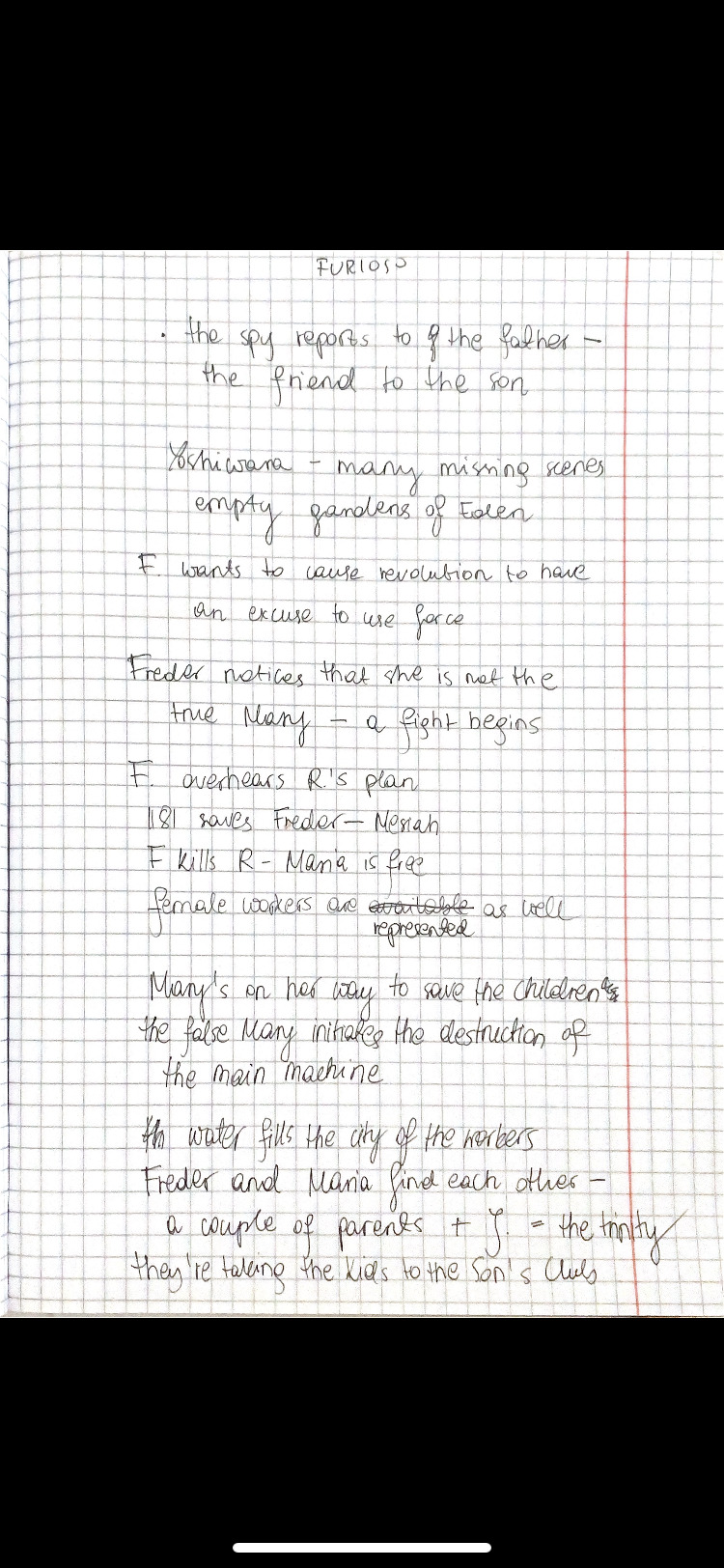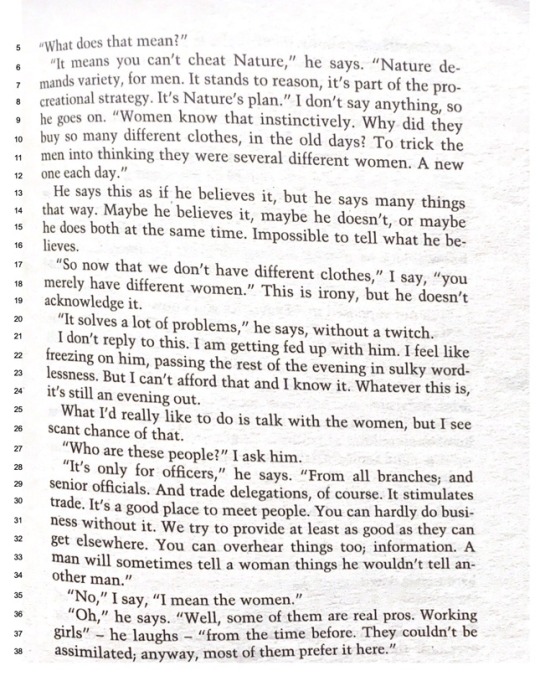Text
Wide Sargasso Sea
by Jean Rhys
A deeply conflicted writer
Born to a Creole mother = creole identity
Wrote mostly during the interwar period
inspired by Charlotte Bronte's Jane Eyre
In Bronte’s novel, Bertha Mason is more monster than human, locked away for a decade in secret, in the attic of Thornfield Hall
set in Jamaica in the 1830s.
deals with problems of identity and inequality that arose as a result of French and British colonization in the Caribbean
Emancipation ACT of 1843
Married Women’s Property Act
It is easy for men to lock up their wives in mental asylums
Alexander Cosway
(the elder)
his first wife
Annette
Cosway
Pierre Cosway
Antoinette
Cosway
/ Bertha Rochester
Mr Mason
Richard Mason
Alexander Cosway (the younger)
Daniel Cosway/Daniel Boyd
Sandi Cosway
—> CREOLES
A person of British/European descent born in the Caribbean
Term connected with racial purity
Also: slaves/animals of foreign descent, yet locally born, not imported
—> SETTINGS:
Part I: Jamaica: Coulibri estate, near Spanish Town
Part II: Granbois, Dominica,
Part III: "Great House", England;
—> PART I: ANTOINETTE'S CHILDHOOD
Isolation after Mr. Cosway‟s death and the emancipation;
The mother‟s remarriage to Mr. Mason;
The riot;
Antoinette in the convent.
The novel opens with A’s narration, looking back at her childhood in 1830’s post-Emancipation Jamaica. Antoinette and her family are isolated, socially and geographically. Antoinette explains that their exclusion from white society is a result of disapproval by “the Jamaican ladies” of her mother’s youth, physical beauty, and origins from Martinique.
Sense of isolation
Calibri garden compared to Eden — biblical reference
The fire
Detachment
—> PART 2
Rochester’s perspective - framed into marriage; negative perception of the honeymoon
A. Is very powerful compared to part 1
R. Doesn’t treat people of color as equals; hates A.’s servants
Sandi - the man who taught A to defend herself
A is connected to the setting - it reflects and completes her identity
Contrast: day vs night
A letter of Daniel Cosway starts to ruin everything
Sex as the means to an end
Aunt Cora - fails A. As another mother figure
Amelie is a personification of the island
Rochester’s infidelity — climax
A. Bites R. ; R dehumanizes A
Parallelism to the way A’s mother marriage looked like
—> PART 3
New perspective - Grace Poole
Shame-culture in regards to mental illness
A is invisible
Red dress - symbol of her identity
She sets fire to the house
They drive her mad in the end by treating her like a crazy person and isolating her
1 note
·
View note
Text


Bullet points:
• racial profiling, which can be explained as targeting and suspecting a person of a certain race based on assumed or observed behavior of a whole racial/ethnic group instead of treating one as an individual
• the ad resembles the wanted poster – effect
• the man on the right is Martin Luther King Jr., the leader of the Civil Rights Movement, and the man on the left is Charles Manson, an American criminal and cult leader – juxtaposition and its effect
• the fact that the head shots of these two figures are black and white only metaphorically emphasizes the ACLU message
• the role of statistics, font, layout; method of association and direct address
• language – tsotsis, Baas – purpose and effect; a lot of epithets, descriptive style
• similie – “exposing the six cuts incised on his buttocks like six gashes with a knife” ; rhetorical question “what does he understand of the court?” – purpose & effect
Mock oral passages & bullet points
2 notes
·
View notes
Text
Beyonce - Lemonade
Team two: Hold up + Anger
additional materials: Oshun, Rist
Beyoncé Channels the Yoruba Goddess Oshun in "Hold Up" Visual
http://theculture.forharriet.com/2016/05/beyonce-channels-yoruba-goddess-oshun.html
In the visual for “Hold Up”, the third track on Beyoncé’s 6th album Lemonade, the singer brings terror to a quaint town as she manically - and quite jovially - smashes cars and store windows motivated by suspicions of her creating lover. But it’s not just intuition fueling her rampage, visually, Beyoncé is channeling something much more powerful - the Yoruba goddess Oshun.
Oshun is one of many dieties, or Orishas, of the Yoruba based religions that originated in present day Nigeria and traveled with the slaves to the Americas during the slave trade. These traditions survived largely through out Latin America and the Caribbean and are still practiced in many iterations, most notably as Santeria in Cuba, Vodou in Haiti, and Candomblé in Brazil.
Oshun is the goddess of love, beauty and womanhood. She dwells in rivers and fresh water and is known for her sweetness and her benevolence. But if betrayed, she's known to bring the fury - sound familiar?
She is often depicted wearing yellow and holding a fan and a mirror, a symbol of her femininity, but in the visual for "Hold Up", Beyoncé trades in those accessories for a baseball bat named Hot Sauce as she ransacks the town in a flowing golden Roberto Cavalli frock.
On Facebook, Maximiliano Goiz, a practitioner of Santeria penned a viral post on Beyoncé's tribute:
Ever is Over All
1997
AV installation
https://www.youtube.com/watch?v=IDydC2EYVDo both screens
details in this one
https://www.youtube.com/watch?v=-gd06ukX-rU one screen
Comparison
https://youtu.be/7z3X-zs1vu0
Pipilotti Rist Interview: Color is Dangerous
https://www.youtube.com/watch?v=NdLuwX2uRTM
https://vimeo.com/260674272
speech - fragments: https://www.youtube.com/watch?v=xaXPhR7aWvo
speech - full: https://www.youtube.com/watch?v=kboP3AWCTkA
Pipilotti Rist - Swedish Artist - pioneer of video art and installation art
“Ever is Over All” 1997 - depicts woman smashing car with a flower.
This scene is juxtaposed with a field of flowers. Both videos have visible pixels and colornoise is visible due to the use of a basic camera - this enhances the painterly qualities of the video art.
Citing from MoMa, “Reist transformers a destructive impulse into a hopeful, cathartic gesture”
The video’s slowed down pace creates a sense of peacefulness which is disrupted by the violence of the woman.
Finally, a female police officer see’s the woman and nods to her in approval. The video art itself carries a message of female empowerment. The flower can be seen as a symbol for femininity, yet takes on a powerful, even destructive role in Reist’s work.
Beyonce’s inspiration from the video is evident. Once she frees herself from her ‘drowning thoughts’ she becomes empowered, as she smashes multiple cars all while smiling and laughing. The people in her surroundings also express their approval of her behaviour as they smile back at her. Beyonce puts herself in the position of the original protagonist of Reim’s video, with the only major difference being that she makes an allusion to the goddess Oshun instead of to blossoming flower fields.
This very clear link between the two videos has resulted in controversy for Beyonce, who has been accused of not properly crediting the original artist. (we have mentioned this in class when a reported claimed that beyonce has very vaguely mentioned the visual inspirations she had referred to her movie)
"Anger"
If it's what you truly want ... I can wear her skin over mine. Her hair over mine. Her hands as gloves. Her teeth as confetti. Her scalp, a cap. Her sternum, my bedazzled cane. We can pose for a photograph, all three of us. Immortalized ... you and your perfect girl.
I don't know when love became elusive. What I know is, no one I know has it. My father's arms around my mother's neck, fruit too ripe to eat. I think of lovers as trees ... growing to and from one another. Searching for the same light.
Why can't you see me? Why can't you see me? Why can't you see me? Everyone else can.
“I can wear her skin over mine. Her hair over mine. Her hands as gloves. Her teeth as confetti. Her scalp, a cap. Her sternum, my bedazzled cane.” → metaphor (I can try to be like her if you like her better)
Anaphora -- “her” → emphasis on the other woman
“We can pose for a photograph, all three of us.” → irony (by cheating he created some kind of a threesome; she makes fun of the fact that another person entered their intimate relationship - if he is so willing to be with another woman, why not introduce them?) “Immortalized” -- they will never forget
“I don't know when love became elusive. What I know is, no one I know has it.” -- love is so hard to find that no one I know has it → example of mom and dad (big influence on kids)
“My father's arms around my mother's neck, fruit too ripe to eat.” → metaphor (the father was not good for the mother, just like Jay Z is not good for her now; their relationship was too rotten to still exist = divorce)
“I think of lovers as trees ... growing to and from one another. Searching for the same light.” → simile + metaphor (lovers are like trees)(same goal - id say happiness and love achieved together - but different ways of getting there → throughout the journey partners sometimes grow apart but can eventually come back)
“Why can't you see me? Why can't you see me? Why can't you see me?” — trippling, repetition, rhetoric questions - reinforcing the message throughout the poem, establishing a melancholic atmosphere, filled with emotions connected to being unable to comprehend why she isn’t seen by her partner, yet desperately trying to understand it
“Why can’t you see me? Everyone else can.” — juxtaposition - visible contrast between the attitude of her partner and the rest of the society,
Why can’t he, the love of her life, see her well enough not to betray like this?
4. “Hold Up” is Beyoncé’s salacious and assertive ode to her partner. In it, she verifies that she loves him physically and emotionally, but also states her intention to figure out where his loyalties lie, even if it means losing her sanity. The lighthearted and upbeat instrumental juxtaposes the actual content of the song, which deals with rage and resentment. This is much like the way Bey carries herself as a public figure: composed and stoic.
Hold up, they don't love you like I love you
Slow down, they don't love you like I love you
Back up, they don't love you like I love you
Step down, they don't love you like I love you
Can't you see there's no other man above you?
What a wicked way to treat the girl that loves you
Bey brings almost a religious context to the song by seemingly suggesting there’s no higher entity above her partner. Indeed, there’s a bit of idolatry that goes hand-in-hand with marriage—the commitment involved is comparable to a kind of worship. Beyoncé points out the callousness of breaking their vow.
Hold up, they don't love you like I love you
Oh, down, they don't love you like I love you
Despite all of the feelings Bey and Jay have for each other, there are hints of cheating throughout this song. Here, she’s not just declaring her love for him, she’s asking him to stop and think about who really has his back. She compares her love to the whole host of his groupies and hangers on. Essentially, she’s telling him how insane it would be to set her aside in favor of that fickle crowd
Something don't feel right
Because it ain't right
Especially comin' up after midnight
I smell your secret, and I'm not too perfect
To ever feel this worthless
Bey falls into the role of the cheated-on lover. Being cheated on can make anyone feel worthless, even if they’ve made songs about being flawless and are known to the world as a queen. Nobody’s perfection can make them immune to feeling terrible.
How did it come down to this?
Scrollin' through your call list
I don't wanna lose my pride, but I'ma fuck me up a bitch
Know that I kept it sexy, and know I kept it fun
There's something that I'm missing, maybe my head for one
Beyoncé describes the paranoia of going through her man’s phone looking for evidence of other women. She’s searching both for confirmation that he’s cheating and an explanation why he would. Coming up empty handed, she questions her own sanity. She never thought she would act like this for any man, but here she is.
What's worse, lookin' jealous or crazy?
Jealous or crazy?
Or like being walked all over lately, walked all over lately
I'd rather be crazy
In the visual album, the spoken word poem “Denial”comes just before “Hold Up.” The poem, written by Warsan Shire and read by Beyoncé herself, describes the attempt to believe anything other than the truth, even committing oneself to religion and suffering to do so (abstinence, fasting, etc.). The poem ends with Bey speaking quietly but firmly: “Are you cheating on me?”
Bey’s jealous, or crazy, or both—she’s been in doubt this entire time on how faithful her partner has been. Though she’s asked his forgiveness for her jealousy on her previous album, this refrain demonstrates she’s over being jealous and would rather be crazy wrong or crazy with rage. She’s been taken advantage of lately, so she might as well be paranoid.
Hold up, they don't love you like I love you
Slow down, they don't love you like I love you
Back up, they don't love you like I love you
Step down, they don't love you like I love you
Can't you see there's no other man above you?
What a wicked way to treat the girl that loves you
Hold up, they don't love you like I love you
Slow down they don't love you like I love you
Let's imagine for a moment that you never made a name for yourself
Or mastered wealth, they had you labeled as a king
Bey suggests that even if he never made it as an entertainer and entrepreneur, she’d still love him, but all the others who pursued him would not.
Never made it out the cage, still out there movin' in them streets
Before Jay Z was one of the most famous rappers of all time, he was a drug dealer in New York.
Never had the baddest woman in the game up in your sheets
Would they be down to ride?
No, they used to hide from you, lie to you
But y'all know we were made for each other
So I find you and hold you down
Bey questions the authenticity of Jay’s loyalties. She asks her husband if other women would really desire him if he wasn’t rich, famous, or married to a woman like her, and asserts that they wouldn’t.
Before her, women used to play games, shying away from him prior to his wealth and success. Bey emphasizes her own claim to Jay; she’s ride or die,
Me sing se
Hold up, they don't love you like I love you
Slow down, they don't love you like I love you
Back up, they don't love you like I love you
Step down, they don't love you like I love you
Can't you see there's no other man above you?
What a wicked way to treat the girl that loves you
Hold up, they don't love you like I love you
Slow down they don't love you like I love you
Hey, this such a shame
You let this good love go to waste
I always keep the top tier, 5 star
A popular way to rate something is out of 5 stars, 5/5 being the top tier ranking. Beyoncé feels like while she brought everything she had to the relationship, her man wasted the opportunity.
Backseat lovin' in the car
Like make that wood, like make that wood
Holly like a boulevard
What's worse, lookin' jealous or crazy?
Jealous and crazy?
Or like being walked all over lately, walked all over lately
I'd rather be crazy
Hold up, they don't love you like I love you
Slow down, they don't love you like I love you
Back up, they don't love you like I love you
Step down, they don't love you like I love you
Can't you see there's no other man above you?
What a wicked way to treat the girl that loves you
Hold up, they don't love you like I love you
Oh, down, they don't love you like I love you
I hop up out the bed and get my swag on
I look in the mirror, say, what's up?
What's up, what's up, what's up
I hop up out the bed and get my swag on
I look in the mirror, say, what's up?
What's up, what's up, what's up
Here, Bey again asserts her flawless-ness confirming how powerful she is and how empowered she feels. This section also serves as a fitting precursor to the entire theme of the next song, “DON’T HURT YOURSELF.”
In the music video for “Hold Up” Beyonce alludes to Oshun- an Orisha of the Yoruba religion. Orishas are deities sent by the gods and Oshun is one of the most powerful and the only female spirit. She is associated with the color gold, rivers, fertility and womanhood, as well as sensuality and love. She is one of the most powerful orishas while still retaining her human traits such as vanity, jealousy, and spite. She is benevolent and sweet, however when hurt or betrayed she can be fierce and spiteful.
Beyonce channels the goddess Oshun and unleashes her rage as she walks through the streets of New Orleans with a baseball bat, smashing the surrounding cars. Just like Oshun, she is dressed in gold as she steps onto the streets barefoot, accompanied by a river flowing from the building.
Through channeling the Yoruba goddess, Beyonce can feel empowered and powerful. The similarities between Beyonce and Oshun are not only referenced on the visual level. Beyonce, just like Oshun, is a mother, a lover, and a woman who is severely hurt. She fiercely lets her rage known by bringing destruction. Just like Beyonce, she can still dance and laugh while taking revenge on those that have hurt her.
“Daddy Lessons” is Beyonce’s first foray into country. The song is about Beyonce’s childhood roots in Texas and the lessons she learned from her father.
the only track on Lemonade where she is the sole credited main producer. Beyoncé is a Houston girl where country music is huge and would have grown up surrounded by the sounds of Nashville. It is interesting that she uses the type of music she grew up with to revisit her own father's infidelity.
Her daddy, Mathew Knowles, has been a driving force not just in Beyonce’s life but in her career—he managed her from the Girls Tyme days through Destiny’s Child and through her early solo career. However, Beyonce fired her father as her manager in March 2011. Many wondered if that was motivated by bad feelings between Matthew and Jay Z. It turned out that it may have been driven as much by Matthew’s infidelity to Tina Knowles. Matthew and Tina split up in December 2011—less than a year after Beyonce and Matthew parted ways professionally.
A recurring theme throughout Lemonade are the similarities between fathers and husbands. If Beyonce can forgive her father, can she also forgive her husband?
This is not the first time Bey has sung about her father: Her 2003 debut album featured the song “Daddy” where she sang:
I want my unborn son to be like my daddy
I want my husband to be like my daddy
The Lemonade clip for “Daddy Lessons” features video clips of Beyonce and her father, whilst also featuring clips of Beyonce and her daughter, Blue Ivy.
—establishing a connection between the country theme of this song and her home state, where country music is very popular.
— juxtaposing Beyoncé’s childhood with the one of her daughter - during ‘Daddy Lessons’, the film intercuts home video footage of Matthew Knowles with both Blue Ivy and Beyoncé at the same age. In True Detective, Rust Cohle memorably posited that “time is a flat circle”; in Lemonade, Beyoncé maintains that “the past and the future merge to meet us here.”
This song finds Beyoncé singing of her father, Matthew Knowles. She recounts how he taught her to be strong and always stand up for herself - making her a "soldier."
At the end of verse two, Beyoncé sings of her daddy dying. Matthew Knowles is in fact very much alive and she's probably referring to her parents' divorce and subsequent estrangement from her father.- it ties into the “western” tropes and metaphors throughout the song
“It's pretty much daddy lessons. A girl that grew up tough. Her father was hard on her, didn't want nobody to take advantage of her. Definitely one of those situations. It painted a country picture in our minds. It sounded tough. 'So my daddy said shoot.' You see the whiskey on the table. You see the rifle. It just had that feel to it.
It didn't take the hip-hop element to make it tough, which I think is very cool especially for Beyoncé. And it goes with her being from Texas. Her vibe to it just makes sense for how it all came together." - Kevin Cossom, co-writer
Lemonade repeatedly returns to the moss-covered bayou, to buildings that resemble plantation homes and their attendant slave quarters. But instead of an antebellum memory, these scenes portray a dream: the fantasy of an all-black, matriarchal utopia when women dress up, prepare meals, take photographs and perform shows, not for a master but for themselves.
Anachronistic details like period dress and antique cameras contribute to the dream-like
feeling of these scenes, which evoke post-Civil War black towns (General Info)
In Lemonade, Fort Macomb represents the persistence of history, its hideaways and tunnels evoking the Underground Railroad. When guitarist Little Freddie King appears in one of those tunnels during ‘Daddy Lessons’, he’s not only a silhouetted stand-in for Beyoncé’s estranged father Matthew Knowles, but an homage to an entire line of Delta blues guitarists (King is a cousin of the late, great Lightnin’
At the end of verse two, Beyoncé sings of her daddy dying. Matthew Knowles is in fact very much alive and she's probably referring to her parents' divorce and subsequent estrangement from her father.
This is Beyoncé's first foray into country and the only track on Lemonade where she is the sole credited main producer. Beyoncé is a Houston girl where country music is huge and would have grown up surrounded by the sounds of Nashville. It is interesting that she uses the type of music she grew up with to revisit her own father's infidelity.
Did you catch the Blue Ivy cameo at the end of the song? Beyoncé's daughter exclaims "Good job Bey!" to her mom during the last five seconds.
LYRICS
Came into this world
Daddy's little girl
And daddy made a soldier out of me
Soldiers are traditionally masculine—they also have an intense work ethic. For all his flaws, Bey’s father taught her how to stand up for herself in a man’s world and work hard to fight for her ambition.
In this aspect, her upbringing colors her feminism today: beautiful and fierce.
Oh, oh, oh
Daddy made me dance
And daddy held my hand
Her father Mathew Knowles was the driving force behind her early forays into the entertainment industry, signing her up for a number of talent shows from the tender age of 7.
And daddy liked his whisky with his tea
And we rode motorcycles
Blackjack, classic vinyl
Motorcycles, gambling, and listening to vinyl records, in isolation, aren’t indicators of a specific type of person. But when they’re combined, they create the stereotypical “hard man,” borrowing images from the Greaser subculture.
Tough girl is what I had to be
He said take care of your mother
Watch out for your sister
Oh, and that's when he gave to me
This line plays off the “western theme” of the song. Back in the old West, when the man of the house was gone for weeks/months at a time, the eldest son (or sometimes daughter) was left in charge to watch over the household. The father would pass down a spare pistol, and advice on how to handle themselves (and their weapon) in order to protect themselves and the rest of the family.
With his gun, with his head held high
He told me not to cry
Oh, my daddy said shoot
Oh, my daddy said shoot → repetition - emphasizing the lesson
With his right hand on his rifle
He swore it on the bible
Religious reference
My daddy said shoot
Oh, my daddy said shoot
He held in his arms
And he taught me to be strong
He told me when he's gone
Here's what you do
When trouble comes to town
And men like me come around
Oh, my daddy said shoot
Oh, my daddy said shoot
Beyoncé compares fathers and husbands throughout Lemonade, and there were long rumors of tension between Mathew Knowles and Jay Z. Perhaps they recognized similar weaknesses in one another. Mathew definitely cheated on Tina—he fathered a child with another woman during their marriage. Now it seems Jay Z has also struggled with fidelity to Mathew’s daughter. So the lyric “when men like me come around” can double as Matthew warning Beyoncé that Jay might be a cheater just like he was.
Beyoncé is staunchly opposed to gun violence, appearing in the Demand a Plan video urging Americans to put down their weapons, but family and heritage are complicated.
Daddy made me fight
It wasn't always right
But he said girl it's your second amendment, oh, oh, oh
The second amendment of the US Constitutioncovers an American citizen’s “right to bear arms.”
Despite invoking gun rights, Beyoncé is not pro-gun. In 2012, she took part in Bloomberg’s anti-gun campaign.
Within the song, she’s not supporting gun rights as much as she’s just being honest about her father. She’s dealing with her family history in a real way, saying, “This is what my father taught me. In many ways, he was a flawed man, but I forgive him because I know he was trying to protect me.” In this way, despite the song’s sonic departure from the rest of the album, it still fits into the album’s overall themes, with the complex interplay between betrayal, acceptance, remembrance, and forgiveness still very much on display.
He always played it cool
But daddy was no fool
And right before he died he said remember
The image Bey projects of her father in this song paints him as street smart, with an aura around him. The death is fictional, as Mathew Knowles is still alive, but it ties into the “western” tropes and metaphors throughout the song. It could refer to her parents divorce in 2011 after 31 years of marriage, ostensibly due to his infidelity. It was also around this time that Bey ended his reign as her manager.With lines like “when trouble comes to town and men like me come around, oh my daddy said shoot,” it’s as if his advice to his daughter eventually got him “killed” for doing the same thing he warned her against.
The Daddy Lessons music video also shows video footage from a joyous New Orleans style jazz funeral, as well as people dancing on a casket. This unique celebration of death likely aligns with the mixed emotions Beyonce must have felt after she fired her father. In Beyonce’s Life Is But A Dreamdocumentary she said “It was hard. I had to sacrifice my relationship with my dad. It was a stressful, sad, difficult time, but I had to let go.”
He said take care of your mother
Watch out for your sister
And that's when daddy looked at me
With his gun, with his head held high
He told me not to cry
Oh, my daddy said shoot
Oh, my daddy said shoot
With his right hand on his rifle
He swore it on the bible
My daddy said shoot
Oh, my daddy said shoot
He held me in his arms
And he taught me to be strong
He told me when he's gone
Here's what you do
When trouble comes to town
And men like me come around
Oh, my daddy said shoot
Oh, my daddy said shoot
My daddy warned me about men like you
He said baby girl he's playing you
He's playing you
My daddy warned me about men like you
He said baby girl he's playing you
He's playing you
Cause when trouble comes in town
And men like me come around
Oh, my daddy said shoot
Oh, my daddy said shoot
Cause when trouble comes to town
And men like me come around
Oh, my daddy said shoot
Oh, my daddy said shoot
It’s ironic that her father teaches her to shoot at such a young age in order to protect herself from “men like him,” and yet he’s unable to change her mind when she ultimately decides to pursue a relationship with a man who, like her father, is a “player.”
In reality, Bey’s father Mathew has spoken very mildly on his relationship with Jay, stating:
I think he’s a great guy. He’s an exceptional business man. And he’s an artist and he loves my daughter. And if she’s happy, I’m overwhelmed happy.
However, tabloids reported regularly on a rift between Jay and Matthew early on in their relationship. As yet, no one has confirmed or denied these rumors, but this song suggests there might be a sliver of autobiographical truth in the media’s speculation.
Some of Bey’s lines from her collaboration with Jay, “Part II (On The Run)”, help to illuminate her perspective on her questionable choice. She toasts hackneyed romantic cliches, such as women changing men with the power of love
FORT MACOMB
Fort Macomb is a 19th-century United States brick fort in Louisiana, on the western shore of Chef Menteur Pass.[1] It is listed on the National Register of Historic Places. The fort is adjacent to the Venetian Isles community, now legally within the city limits of New Orleans, Louisiana. This community was some miles distant from the city when first built and is still distant from the main developed portion of the city.
Before its ruins provided scenery for portions of Beyoncé’s visual album “Lemonade,” HBO’s series “True Detective,” or AMC’s “Into the Badlands,” Fort Macomb was considered a crucial line of defense for New Orleans and the country at large.
!!!! The fort’s tenants during the Civil War included the First Louisiana Native Guard, which was among the Union Army’s first all-black units. !!!!
In "Lemonade," Beyonce wafts around in a gown and belts out a New Orleans-flavored country tune. Listed on the National Register of Historic Places, Fort Macomb was built in 1822 and was occupied by Confederate forces in the Civil War before the Union took over.
Beyoncé's decision to feature a young, female Mardi Gras Indian in Lemonade serves several purposes. It's a shout-out to her family's Louisiana heritage and another example of her centering black women throughout the video. The costumed young woman later briefly reappears in a segment in which the female relatives of black men who were killed by police — Sybrina Fulton, the mother of Trayvon Martin, and Leslie McSpadden, the mother of Mike Brown — are holding photos of their slain loved ones; the Mardi Gras Indian is holding an old black-and-white photo of her own. Her expression during both appearances is solemn, and we know that she has her own story that we only get a glimpse of. Like so much of Lemonade, the Mardi Gras Indian's appearance is a nod to inheritances, both political and personal, of womanhood and heritage and history and race.
Text/ Lyrics
Forward is the shortest song on the album and it is also a turning point marking Beyonce’s decision to move on and start a new chapter in spite of everything that happened in her relationship
[Verse: James Blake, James Blake & Beyoncé]
Forward
Repeated in the song almost like a mantra, “forward” in itself is a word of progress, development or movement towards a goal. The title of the song defines the nature of it—it reflects Beyonce’s willingness to put the past behind her and focus on rebuilding the love that was lost in her relationship. Throughout the majority of the record, she has lamented and scorned over her husband’s infidelity. Yet in Forward she proclaims a new state of reconciliation, where she is open to rebuilding their love from the start. It symbolizes a new chapter in her life.
In the context of her experience as a black woman, she calls for continued progress towards social equality for African-American females who have been continuously neglected and mistreated for generations. She wants to start moving forward, towards freedom, towards justice, equality.
Best foot first just in case
When we made our way 'til now
It's time to listen, it's time to fight
When someone has been injured, they put their best leg forward to offer the sturdiest foundation and to support themselves. In this case, Beyoncé and Jay Z’s “best foot” is the love that they have nurtured for so long and their daughter, that was produced from this love. These lyrics show that despite the hostility and turbulence that affected their relationship, she wants to start working through these problems, communicate in order to move forward even for the sake of their daughter.
Forward
Now we're going to hold doors open for a while
Now we can be open for a while
Making a strong emphasis on the need for honesty in the relationship of Beyoncé and Jay Z. By making a reference to holding doors for another person, a signature of chivalry, Beyoncé expresses the need for her husband’s chivalry to make their relationship go on - chivalry understood in the context of openness and marital honesty. She stresses that Jay Z hasn’t necessarily been honest with her in the beginning of their relationship, as proven by his infidelity, therefore he should currently focus on “being open for a while” with his wife. The anaphoric repetition of ‘now’ shows how it is vital that they both open up about their mistakes and problems in the present moment in order to build a happier future.
Forward
I love you more than this job, please don't work for me
The singer James Blake seems to be speaking on Beyonce’s business and personal relationship with Jay Z. She has her own management company, Parkwood Entertainment, and she currently manages her own career, in conjunction with her husband. She appears to desire a relationship where both partners are on equal footing, no-one works for the other, and financial and performance issues don’t derail their personal ties. She wants to separate her personal life from her professional career and doesn’t want these two aspects of her life to intertwine.
Forward
Go back to your sleep in your favorite spot just next to me
Sleep is a moment of vulnerability and peace, and she invites her husband to be vulnerable with her and to be open about his mistakes. The aggressive, confrontational and careless attitude she displayed in songs, like “Sorry” where she doesn’t care about the consequences of her actions, and simply seeks independence and fun, has died down and is replaced by a desire to reconcile what has been lost, tackle that obstacles that stand in her way and work on mending the broken aspects of their relationship together.
Forward, ooh, forward
[Outro]
Forward, forward
This song is played over a montage of clips where photographs of victims of police bruality over the years are being held up by their mothers or other black women. The black and white pictures from the time of slavery juxtapose the pictures of the most recent victims of police brutality. And by showing how the past and present merge together, Beyonce highlights the continuous oppression faced by the black community in the United States, showing their shared experiences and trauma that are deeply embedded in their history.
Visuals + allusions
opening with a large tree at Destrehan Plantation, previously seen in the first chapter; site holds memory of communal resistance and horrific violence, site of 1811 German Coast Uprising
the assembly of women similar to that in the opening chapter; white dresses; collection of shots of women (individuality, beauty, resistance, power); acknowledgement of Beyonce’s ancestry and the history of black women in particular
Amandla Stenberg cameo, setting up an old-fashioned accordion box camera on a tripod
Stenberg directs a group of about 20 young black women at Destrehan, where the past meets the present; young women face the brutal past as the hopeful symbol of the future
visual allusions to daughters of the dust (1991 Julie Dash): camera and photography techniques are similar;Stenberg and accordion box camera - photographer documenting three generations of a Gullah family named Peazant as they prepare to leave their Georgia coast island and migrate north to the mainland during the Great Migration
Gullah family preserves African heritage after plantation owners leave; These generations of family members must contend with the history of slavery that informs their present, and decide what aspects of their past they need to hold onto and what they need to let go of as they embark on their new lives
Photos strewn about the grass at the ruins of Fort Macomb, the still standing relic from the American Civil War. powerful force of hope from an era dominated by the threat of brutal lynchings. As the camera traverses the landscape, we are literally being led by Beyoncé’s ancestors into the fortress, a symbol of the history she must confront.
Fort Macomb was considered a crucial line of defense for New Orleans and the country at large.he fort’s tenants during the Civil War included the First Louisiana Native Guard, which was among the Union Army’s first all-black units
Beyoncé’s only appearance in the chapter, within the walls of Fort Macomb, lit by candles as if the ruins have been converted to a vigil. Beyoncé gazes into a photograph, drops it into a large trunk, and in the reflection of a mirror we see her wipe her hands clean. This gesture demonstrates a decision made concerning what elements of the past to hang on to and which to let go.
Young Black women, including Quvenzhane Wallis and Kajifa Brown (left) and model Winnie Harlow (bottom right), show black and white photos of older Black men to the camera, honoring their lives and legacy.
the so-called “Mothers of the Movement,” activists for change and advocates for gun control, criminal justice reform, and improved police training. Their unspeakable grief on display is shared;Lemonade calls attention to the strength of generations of Black mothers who endured the loss of their children to racialized violence.
black and white pictures from the time of slavery juxtaposed with pictures of the most recent victims of police brutality; he continuous oppression faced by black individuals in the United States, they continue to endure despite the abolishment of slavery; recurring theme in Lemonade whereby past and present merge together to deliver a cohesive message; showing the shared experiences and trauma of the black community that is deeply embedded in their history
throughout Lemonade there are throwbacks to the images of Solange's New Orleans wedding with "shots of a group of solemn black women dressed in fanciful white dresses." Beyoncé seems to be taking on the power of her sister. Tribute to her sister and admiration for her steadfastness
Kajifa Brown, “Queen Yaya,” of the Washitaw Nation, a New Orleanian Mardi Gras Indian Tribe, performs a ritual with a tambourine in an empty, candlelit dining room. The dining room and table is a symbol of family and community, its emptiness a reminder of the lives cut tragically short and the void thereby left. Queen Yaya performs the ceremony to heal the space and resurrect spirits.
Beyoncé's decision to feature a young, female Mardi Gras Indian in Lemonade serves several purposes. It's a shout-out to her family's Louisiana heritage and another example of her centering black women ; (Mardi Gras Indians are groups of African-Americans, referred to as "tribes" and organized by neighborhood, who dress up and parade during Mardi Gras, St. Joseph's Day and Super Sunday. )the Mardi Gras Indian's appearance is a nod to inheritances, both political and personal, of womanhood and heritage and history and race.
The chapter’s final image, a black and white shot of Beyoncé with a group of Black women inside a Jim Crow era school bus, the same women and setting from “Apathy.” With poet Warsan Shire’s utterance of the word “magic” over the image, we consider the obvious nod to the idea of “Black girl magic.”
HOPE: Previously depicted as despondent, paralyzed, and silenced, here in “Hope,” the women occupy the tiny cabin with beauty, color, and feminine grace, giving the impression of solidarity and self-sustaining community as the women nourish themselves and care for one another
Paulette Leaphart, a breast cancer survivor, inside Fort Macomb, serving as a symbol of survival, a woman literally scarred, but living on stronger because of her hardship.
photos of black victims over different years, held by their mothers or other black women (black and white pictures from the time of slavery juxtaposed with pictures of the most recent victims of police brutality) - showing the continuous oppression faced by black individuals in the United States, they continue to endure despite the abolishment of slavery [also aligns with the recurring theme in Lemonade whereby past and present merge together to deliver a cohesive message] - further showing the shared experiences and trauma of the black community that is deeply embedded in their history
Team three: Forward (see p. 7 of the "General info" file + google Mardi Gras Indians) + Hope ( Solange in in "6women" file + Fort Macomb)
p. 7 of the "General info" file
Juxtaposing documentary and narrative footage underscores what Beyoncé has done with her lyrics, toying with the distinctions between public and private, general and specific, real and fake, past and present. Just as she did by intercutting the mothers of Trayvon Martin, Eric Garner and Michael Brown with actresses holding photographs of unknown men, Beyoncé suggests that the distinctions are less important than some may make them out to be.
The cracked bowl
After drawing on art, poetry, history and cinema to allude to the seven stages of post-infidelity grief, Lemonade drops perhaps its most telling detail around the 40-minute mark with a brief shot of a small cracked bowl. The bowl is Japanese kitsugi, or “golden joinery”, a style of ceramics which repairs broken pieces of pottery into new objects, with the previous cracks left visible through lacquer mixed with powdered gold. The meaning is pretty clear: a broken bowl, or a broken relationship, can be fixed – and the work it takes to repair can make the final object more beautiful than it was before.
Solange in in "6women" file
6) Solange
Solange — Beyoncé's younger sister, and musician and style icon in her own right — does not make a cameo in Lemonade, but you see and feel her presence everywhere.
In the first turn to the gothic mansion in "Intuition," the camera pans to black women in a similar formation to Solange's iconic 2014 wedding photo:
Beyoncé pays tribute to Solange. HBO
But you can also feel Solange in Beyoncé's steadfastness, a trait she has admired Solange. In an interview with Essence, Bey said:
I'm very proud of my sister and protective of her. Solange is the one person I will fight for. Don't talk about my sister; don't play with me about my sister. If you do, you'll see another side of me. I admire her, and though she's five years younger than me, I strive to be like her. She's so smart and secure. She's sensitive to people's feelings, but not afraid of what they think.
Ultimately, Lemonade is as much about Beyoncé's journey of self-affirmation as it is a tribute to black women in general. We learn at the end of the film that her grandmother inspired Lemonade, and Beyoncé transformed that inspiration into an hour-long film that puts black women at the forefront.
The ties are generational. The bonds are unwavering. And through a visual and audio love note, Beyoncé offers to black women who have passed away, who live today, and who are yet to come, a gift: the assurance that in a world where society neglects to see black women or say their names, black women recognize each other.
https://www.vox.com/2016/4/26/11501466/beyonce-lemonade-warsan-shire
FORT MACOMB
Fort Macomb is a 19th-century United States brick fort in Louisiana, on the western shore of Chef Menteur Pass.[1] It is listed on the National Register of Historic Places. The fort is adjacent to the Venetian Isles community, now legally within the city limits of New Orleans, Louisiana. This community was some miles distant from the city when first built and is still distant from the main developed portion of the city.
Before its ruins provided scenery for portions of Beyoncé’s visual album “Lemonade,” HBO’s series “True Detective,” or AMC’s “Into the Badlands,” Fort Macomb was considered a crucial line of defense for New Orleans and the country at large.
!!!! The fort’s tenants during the Civil War included the First Louisiana Native Guard, which was among the Union Army’s first all-black units. !!!!
In "Lemonade," Beyonce wafts around in a gown and belts out a New Orleans-flavored country tune. Listed on the National Register of Historic Places, Fort Macomb was built in 1822 and was occupied by Confederate forces in the Civil War before the Union took over.
Mardi Gras Indians
Mardi Gras Indians gathering along Bayou St. John for "Super Sunday" 1991
Mardi Gras Indians (also known as Black Masking Indians) are black carnival revelers in New Orleans, Louisiana, who dress up for Mardi Gras in suits influenced by Native American ceremonial apparel.
Collectively, their organizations are called "tribes". There are about 38 tribes which range in size from half a dozen to several dozen members. The groups are largely independent, but a pair of umbrella organizations loosely coordinates the Uptown Indians and the Downtown Indians.
In addition to Mardi Gras Day, many of the tribes also parade on Saint Joseph's Day (March 19) and the Sunday nearest to Saint Joseph's Day ("Super Sunday"). Traditionally, these were the only times Mardi Gras Indians were seen in public in full regalia. The New Orleans Jazz & Heritage Festival began the practice of hiring tribes to appear at the Festival as well. In recent years it has become more common to see Mardi Gras Indians at other festivals and parades in the city.
Notwithstanding the popularity of such activities for tourists and residents alike, the phenomenon of the Mardi Gras Indians is said to reflect both a vital musical history and an equally vital attempt to express internal social dynamics.
Beyoncé's 2016 visual album Lemonade showcases a Mardi Gras Indian circling a dining table, paying homage to the New Orleans culture.[13]
Beyonce's new visual album Lemonade is chock full of images begging to be unpacked, from the Yoruba face paint to the baseball bat named Hot Sauce to the brief shot of a kintsuji bowl. "You could write a think piece on every single frame of Lemonade and it almost still wouldn't be enough," writes Lainey of Lainey Gossip. She's not exaggerating.
One such image arrives about 45 minutes in: For almost 40 seconds, a figure slowly circles a dining room table as she shakes and strikes a tambourine. She's dressed head-to-toe in white, decked out in feathers, intricate beadwork, and a headdress the size of a small human.This scene might seem like another example of the visual mystery that Lemonade is lush with — she could be a ghost, she could be delivering a blessing. But for people versed in New Orleans culture, this, like much of the imagery in the album, is familiar: the young woman circling the table is a Mardi Gras Indian.
Mardi Gras Indians are groups of African-Americans, referred to as "tribes" and organized by neighborhood, who dress up and parade during Mardi Gras, St. Joseph's Day and Super Sunday. Tradition holds that their hand-sewn costumes are worn for only one season, and they can take a year or more and thousands of dollars to make. According to New Orleans Online, their costumes can weigh up to 150 pounds. (This Flickr page shows how ornate and colorful those costumes can be.) Larry Bannock, the former president of the New Orleans Mardi Gras Indian Council, described the Mardi Gras Indians as "the parade most white people don't see." The times and locations of the parades vary, so unless you're part of the community, it's not easy to predict when they'll be around.
When different tribes encounter each other in the streets, there's usually some sort of power play: Years ago, they would physically fight each other, but today they participate in faux battles that include dancing and chants.
1 note
·
View note
Text
A Dry White Season (1979)
// Miracle of Rising
// After Soweto
Outwitting the censors
1979 printing: 3000 copies, a private publishing press in Johannesburg
Defected two weeks later - too late to confiscate the first printing, but the book was banned
Simultaneous publication in the UK - a great success
The SA authorities embarrassed into lifting the ban
The Black June
Multi-day youth riots in Soweta started 26th June 1976, after obligatory Afrikaans classes imposed on Black population
Brutally suppressed - armed personnel carriers, machine guns, and helicopters against stones
SA internationally condemned for the massacre of the youth and the use of violence at a mass scale
A moral obligation
A dry White Season illustrates the thesis made by Brink in his article „After Soweto” (1975)
Following the massacre, the white citizens of SA shoulder a tremendous moral responsibility, which each should fulfill no matter the personal consequences
Be du Toit is an example of a person who took his moral obligation to the end
Torture
Torturing political prisoners was frequent in SA in the 70s
The 1973 report of the UN Special Committee Against Apartheid described over 100 cases of mistreatment of prisoners
Often used by Special Branch (resembles Gestapo)
In 1977 at least 20 arrested people died in shady circumstances (according to Western press)
Mohammed Salim Essop
Prisoner that could never be traced - Jonathan
Ahmed Timol
an anti-apartheid activist, political leader and activist in the underground South African Communist Party (SACP), based in Roodepoort, near Johannesburg. He died five days after being arrested at a roadblock in Johannesburg, following torture and beatings. Police claimed he leaped out of window on an upper floor of the John Vorster Square police building, and were exonerated in a 1972 inquest. The claim was widely disbelieved at the time, and a 2017 judicial review of the case declared that he had, instead, been murdered.
Story of Gordon
Steve Biko/Stephen Batu Biko
Donald Woods
Dan Levinson
James Thomas Kruger
Revision in Ben’s house was based on the writer’s own experience
Desmond Tutu
Harold
Inspiration for Stolz
The book:
It was good to have a white friend — protector (they can vouch that sb is a „good black Person”
There is so much evil that we have to either go its or become desensitized
Transkei - where Mandela was born (37)
Black man’s options in life - even if someone was academically promising , he had to take up a millennial job in order to support their family
Jonathan - goal —> you will go to school for as long as possible; Ben checks if Jonathan is „worth” helping, stating that he is, he decides to help them financially; Jonathan works in Ben’s garden over the weekends (saving his dignity, mutual agreement ad benefits)
Jonathan — start of the drama, something that hurts him and humiliates him and fills him with anger —> arrested for a crime he did not commit, 6 cuts on his butt
Robert (|second son) leaves for Mozambique to a military camp, says he will not come back without a gun in his hand
Sickness - systemic racism
Soweto youth uprising — protest against forced Afrikaans for black people
s. 41 — alliteration, short sentences, enumeration, anaphora
Striking ending sentence (single)
Stanley — blackjack, middle-man; translates and transfers between the world of the blacks and the world of the whites; deals both with the police and criminals
The only character that considers himself equal to Ben
John Vorster Square — main police station; a bit like Szucha (Pawiak); such strong connotations
Stanley and Gordon introduce Ben to the idea that the state suctions differently for people of different skin colors
Redivivus — obrodzony
Poise - slightly above things
s.45 first hint of torture — use = first trace (hospital)
Seconn trace — cleaner —> another sign of torture (he was asked to wash blood off of the floor) - Jonathan was held I the basement
S.47 — they find out about his death; Ben starts to want to know the real truth
Gordon wanting to find his son’s body - Greek tragedy connotation
Inciting action
Peripety — where the protagonist loses his good luck/falls upon ill luck
Anagnorisis/ recognition — the moment when you realize something tragic happened in your life
Catastrophe
Denouement
Dramatic irony -when you try to do something good but it turns out to be bad
Analytical drama - when the plot is presented not chronologically, but begins at the point of a climax and we learn about the events later on; we know what happened but then we discover the truth
Synthetic drama — the opposite; it is chronological and we get information as we go
Structure of the play: when does the play begin
ab ovo (from the beginning)
In medius res (from the middle
In ultimate res |(from the end)
Torture — described in points
Why? —> methodical, detached, so frequent
1 note
·
View note
Text
Oral 1 outline & notes
Notes for the oral (maximum of 10 bullet points) :
Works chosen Work A (literary text): The Handmaid’s Tale by Margaret Atwood
Work B (non-literary text): The Burger King advertisement
Global issue: Objectification of women
The advertisement:
The woman is portrayed as if she was participating in a sexual act - makeup, facial expression, stereotypically attractive for everyone type of beauty
The sandwich and its description alludes to the sexual act - super seven incher, long, juicy, yearn for more, fill your desires
Use of font and placement of information - it’ll blow your mind away, the woman paired with the sandwich as the main part of the ad, colors, little logo
Purpose of the ad - bring attention of male customers by referring to the act of oral sex; portraying women as those who are supposed to serve men
Global issue (objectification of women): the representation of a woman and the purpose that this representation serves; sexual reference even in a food ad = using women and their sexuality to develop business (Burger King, earning money)
The Handmaid’s Tale
Subjection of women and their sexuality in Gilead; the roles assigned to genders
Fragment: Nature’s plan regards men, women are there to serve men
The way women dress define what they are; they should be replaceable and keep a man interested
Answer to Offred’s question: he assumes that she means men; the way in which he talks about men vs. women
Global issue (objectification of women): men’s perception on the role that women has in the world; what defines a woman; using women and their sexuality to develop business (the club, connections, information)
Notes
released in 2009 for their new sub called the „Super Seven Incher”
The spokeswoman for Burger King refused to reveal the name of the advertising agency - local agency in Singapore.
image of the woman; portrayed as if she was participating in a sexual act
modeled on a stereotypical image of a commonly attractive woman - blonde hair, red lips, noticeable dark make up, blush on the cheeks
her eyes are widely open in an act of surprise caused by the size of the sandwich
lips — she is most likely preparing herself to take a bite of the super seven incher sandwich
naked neck is exposed
how she is positioned in relation to the sandwich.
word play presented in the tagline „It’ll blow your mind away”
Language — sexual double-meaning.
Super Seven Incher, „long” and „juicy”, „fill your desire” and „yearn for more”
description of the sandwich’s ingredients are shown in a small font at the bottom of the ad, the logo of the company is very small and placed in the upper right corner; the woman and the sandwich placed near her mouth the main part of the ad
purpose of the ad - it is meant to attract men, who will in majority most likely connote this picture with the act of oral sex
It proves that in this case women and their sexuality are used in order to promote products and therefore develop business and earn more money
———————
the future in which the United States has become the Republic of Gilead due to a revolution
based on biblical fundamentalism and strict enforcement of social roles
women are stripped of their independence: they cannot hold property, make their own choices, read, control money
Divided into groups - functions, dress code
main character of the novel is a Handmaid; she is also the first-person narrator of the novel; OF FRED
1 note
·
View note
Text
Higher Level Essay notes
HIGHER LEVEL ESSAY IDEAS:
Othello
The theme of womanhood explored in Othello through three different female characters - Desdemona, Emilia and Bianca
Racism in Othello expressed through animal imagery
Othello as a play embracing feminist values and anti-racist approach to people of different nationality
Foreshadowing as a main tool of building suspense and tension in Othello
Eponymous character in Othello as a tragic figure
https://crossref-it.info/textguide/othello/41/0
25.05 outline
8.06 first draft
three main areas: actions (showing privilege or lack thereof), language, and people's response to them.
a handout explaining the nature of the task, possible sources and requirements, along with the assessment criteria;
a link to the presentation helping you shape your thesis statement;
introduction to MLA citation style
materials on conducting your research
website with tips on essay writing.
1 note
·
View note
Text
Higher Level Essay Outline 1
Higher level essay outline
How does Shakespeare present the differences between women deriving from their social status through the female characters in Othello?
Introduction
Brief summary of Othello’s setting and context — Cyprus vs. Venice (juxtaposition —> Cyprus is violent, Martial Law; Venice is a multicultural, modern city), late 15th century/early 16th century, Turkish threat, genre - domestic tragedy,
Brief, technical presentation of the two characters I will be analyzing - Desdemona and Emilia:
Desdemona — daughter of a Venitian senator, wealthy and privileged, her marriage with Othello is respected only due to her social status; naive, young, inexperienced, morally pure, innocent
Emilia — a maid of Desdemona and a wife of Iago; working class/lower middle class, cynical approach to female/male relationships, experienced, feminist characteristics
Their different social status results in different use of language, different actions and approaches to life, different treatment received from others
Body
Desdemona —
men treat her with respect and refer to her as to something perfect and completely wonderful
He hath not yet made wanton the night with her, and she is sport for Jove
She’s a most exquisite lady
And I’ll warrant her full of game
Indeed she is a most fresh and delicate creature What an eye she has! Methinks it sounds a parley to provocation
An inviting eye, and yet methinks right modest
And when she speaks is it not an alarum to love? She is indeed perfection
Well, happiness to their sheets! 2.3.15-25
“O, behold, The riches of the ship is come on shore! You men of Cyprus, let her have your knees. Hail to thee lady! And the grace of heaven, Before, behind thee, and on every hand, Enwheel thee round!” 2.1.83
Her choice of a husband - a Moor from a lower social class - is not taken well, but respected due to her position
My daughter! O, my daughter!
Dead?
Ay, to me 1.3.57-59
When Othello strikes her, Lodovico is shocked and displeased
She can speak her mind freely, but she does so in a respectful manner
My noble father,
I do perceive here a divided duty:
To you I am bound for life and education;
My life and education both do learn me
How to respect you. You are lord of all my duty:
I am hitherto your daughter. But here’s my husband; And so much duty as my mother showed
To you, preferring you before her father,
So much I challenge that I may profess
Due to the Moor my lord 1.3.178-187
Language - no swearing, religious references
Heaven pardon him!
I cannot say whore: it does abhor me now I speak the word
Refers to her husband by my lord
Innocence, submission
I am obedient 3.3.89
Commend me to my kind lord 5.2.125
Come, my dear love
The purchase made, the fruits are to ensue 2.3.8-9
I will not stay to offend you
Truly, an obedient lady 4.1.209
Emilia —
Her husband is abusive towards her, he publicly dishonors her — no outrage in others
It is a common thing to have a foolish wife 3.3.303
villainous whore 5.2.227
People either ignore her or disrespect her
Yet she’s a simple bawd that cannot say as much. This is a subtle whore. 4.2.22
Language - swearing, no boundries, straightforward
I will be hanged if some eternal villain, some busy and insinuating rogue, some cogging, cozening slave, to get some office, have not devised this slander, I’ll be hanged else!
A halter pardon him, and hell gnaw his bones!
To be called whore? would it not make one weep?
Feminist approach, a truth-teller; reveals Iago’s doings and confronts Othello after he murdered the pure Desdemona
Let husbands know,
Their wives have sense like them; they see and smell,
And have their palates both for sweet and sour
As husbands have 4.3.92-95
They eat us hungerly [men], and when they are full
They belch us 3.4.101-102
I do think it is their husbands’ faults
If wives do fall 4.3
I will speak as liberal as the north 5.2
So come my soul to bliss, as I speak true 5.2
Emilia and Desdemona —
Both referred to as whores by their husbands
Both sexualized
Both used in men’s games (Emilia - trying to get the handkerchief for her husband, Desdemona - trying to get her husband to forgive Cassio)
Conclusion:
Desdemona - more privileged, subtle, submissive, innocent, respected; less vulgar, independent
Emilia - much less privileged, rarely taken into consideration, not really cared about, less subtle and sumbmissive, more vulgar, independent and with no boundries
These two women are so different, however, a friendship forms between them; they trust each other, they touch upon important life topics; Emilia gives her life for Desdemona
Their actions, their language and the way people treat them and refer to them is different due to their social status, as it is really important in the 16th century society; however, deep down, they have similar dilemmas, struggles, problems; they both struggle with how belittled they are in comparison to men
2 notes
·
View notes
Text
Trevor Noah
Born a crime - 25th of may
https://aderie.files.wordpress.com/2018/06/born-a-crime-trevor-noah.pdf
Memoirs are easily confused with autobiographies. While all memoirs are autobiographical, not all autobiographies are memoirs. Memoirs are reflections upon one's life, including the life lessons that can be gleaned from a section of one's life. They are story-like and anecdotal, while autobiographies are the retelling of one's own history. Here are several characteristics that you will want to consider when analyzing or writing memoirs.
https://www.youtube.com/watch?v=ufdvYrTeTuU
Noah is a comedian so he writes as if he was constructing a joke
Meaning and rhythm
Noah constructs paragraphs by prolonging the effect by saying sth in different words
Parallel constructions
Short lines after short sentences
Rhythm
Trippling
Parallel pairs
Keeping in energy of the joke
A voice - present in a memoir
Voice - In memoirs, we as readers are looking over the story teller's shoulder. They retell events directly to us, that is to say that that memoirs are usually told in direct narration. We hear thoughts that only the protagonist and the reader are allowed to hear.
Hindsight wisdom - In memoirs, authors usually look back on the events of their life once they are wiser. This hindsight wisdom is part of the narrative voice.
Difference between you doing stuff and you looking back on how you were doing stuff
Dialogue - Since a memoir is told as a story, characters are given their own voice. There is direct speech. Dialogue makes the story come to life and allow the reader to experience it first-hand. Again, we have the impression that we are looking over the shoulder and witnessing the author's life as it unfold before her.
Noah is good at copying people and giving their impressions - it is seen in the way he constructs the characters
Anecdotal - Memoirs are usually the retelling of several larger anecdotes. The author tells us how significant moments help shaped her, Since these events were so influential, we want to know more about them.
String of personal essay memoir
A personal essay
Creative nonfiction has elements of fiction such as characterization, plot, and scene development, theme, symbolism, and literary devices.
Noah’s memoir discusses themes : injustices, human connections, identity, and personal growth by effectively using fictional elements.
So: Personal essays are nonfiction stories which are a type of creative nonfiction. Personal essays are personal because they reach the audience on a human level. The narrator of the story is not invisible.11 Instead the narrator feels like a personal friend expressing an intimate story from one’s life. In Writing and Selling Short Stories and Personal Essays, the author writes,
“Personal essays are characterized by their sense of intimacy and conversational tone. A personal essay is the author expressing his intimate thoughts and feelings…When you write from a place of vulnerability, readers see themselves in your situation and understand that their own experiences are universal.”
Personal essays also possess a strong narrative arc
The narrative arc is the progression of the plot in a story. The beginning of the arc explains the characters and setting of the narrative. The conflict is the main problem in the story. Plot development includes exposition, rising action, climax, falling action, and resolution. Exposition is the introduction of characters and settings. The rising action are the events that build up the tension and introduces the conflict or problem of the story. The climax is the major event that changes the character. The falling action are the events that wrap up the story. The resolution explains a lesson or how the story ends. Fictional stories typically follow this arc in this form. Creative nonfiction, especially personal narratives have great plot development.
epiphany
Defining Memoirs
They are collections of personal essays and stories centered on major themes. Memoirs are easily confused with autobiographies. Memoirs are biographical in nature because they tell the accounts of one’s life. Whereas an autobiography tells the chronological account of a person’s lifetime, a memoir narrows on fewer events that center on specific themes. Autobiographies sometimes read like encyclopedia entries
Characteristics of the book
1. Each chapter reads as a separate personal essay. Chapters begin with captivating introductions, explain a turning point or surprise, and possess a clear conclusion. The memoir as a whole is not completely chronological because the chapters have their own beginnings, middles, and ends. His introductions use strategies such as vividly describing a person or beginning with a captivating sentence.
Stories are unchronological
2. New sections of the book begin with explanatory material ranging from historical documents to
broader social and political commentaries about South Africa. Consider the function of these
aspects of the book and then decide how this structure either supports or detracts from the
work as a whole.
3. Overarching history of Trevor’s mother. Noah’s memoirs begin with a story about his mother. These stories weave themselves throughout the book, concluding with a final story about her. Evaluate why he anchors the book with their relationship and the impact of this decision.
4. Humour.
Trevor Noah is no stranger to the stage and his performance style is reflected in his writing. Noah is a standup comedian and hosts the Emmy Award winning show The Daily Show on Comedy Central. The writing in his memoir expresses his style of storytelling and personality. On stage, he has a special talent for impersonating characters of various backgrounds and languages in his stories. He speaks multiple languages. He often tells a story within a story that helps to build up to the punchline of his jokes. This style is reflected in his memoir. Throughout the memoir, he often writes vignettes in the middle of the story that later make the climax of the story more poignant for the reader.
In literature, a vignette (pronounced vin-yet) is a short scene that captures a single moment or a defining detail about a character, idea, or other element of the story. Vignettes are mostly descriptive; in fact, they often include little or no plot detail.
Read the following three documents:
Prohibition of Mixed Marriages Act, 1949
Prohibition of Mixed Marriages Amendment Act, 1968
Immorality and Prohibition of Mixed Marriages Amendment Act, 1985
Chameleon
Linguistic profiling is the practice of identifying the social characteristics of an individual based on auditory cues, in particular dialect and accent. The theory was first developed by Professor John Baugh to explain discriminatory practices in the housing market based on the auditory redlining of prospective clientele by housing administrators. Linguistic profiling extends to issues of legal proceedings, employment opportunities, and education. The theory is frequently described as the auditory equivalent of racial profiling. The bulk of the research and evidence in support of the theory pertain to racial and ethnic distinctions, though its applicability holds within racial or ethnic groups, perceived gender and sexual orientation, and in distinguishing location of geographic origin.
Baugh's theory is distinct from linguistic profiling as defined by Hans van Halteren from the University of Nijmegen in the Netherlands. Van Halteren's theory deals with the categorization of linguistic features for the purposes of author identification and verification from a text, not necessarily specifically addressing the socially defined categories within which they are included.[1]
https://www.youtube.com/watch?v=HJ778_tsqjs&list=PL-c_K0NHBhTGpecqjTkQjBlpLzmTe2zyH&index=149&t=0s
Language can be used in order to converge od diverge
1 note
·
View note
Text
Notes on Xinran’s „The Woman Whose Marriage Was Arranged By The Revolution”


2 notes
·
View notes
Text
Notes on Xinran’s „The Woman Whose Father Did Not Know Her”
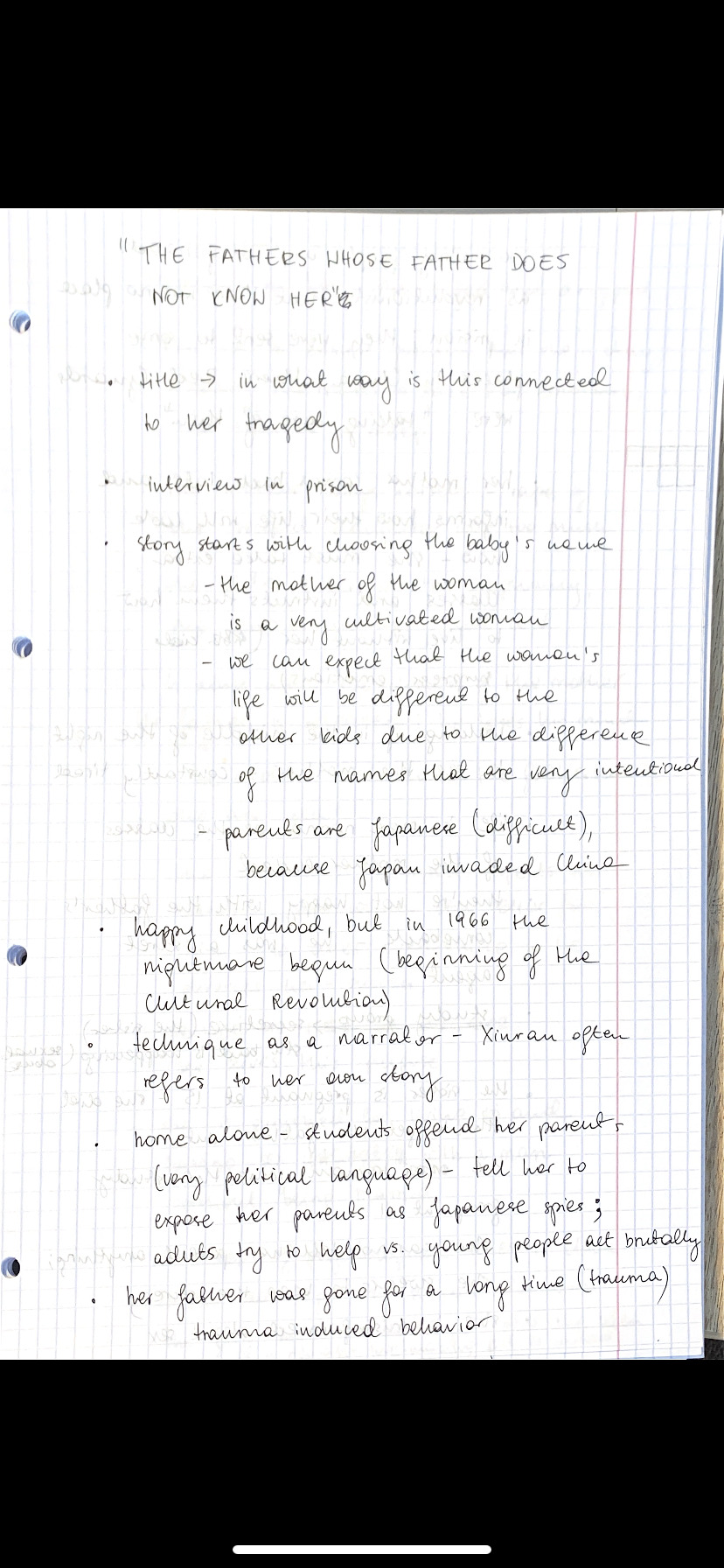


1 note
·
View note



